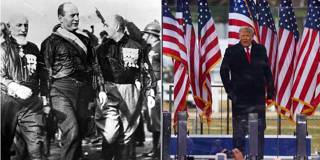OnPoint Subscriber Exclusive
Longer Reads provide in-depth analysis of the ideas and forces shaping politics, economics, international affairs, and more.

One Hundred Years of Fascism
For fascist parties and politicians to win elections, they usually must attract support from people who, if asked, would loudly reject the fascist label. But this need not be so difficult: voters merely have to be persuaded that democracy is no longer serving their interests.
NEW YORK – When Fascist Blackshirts marched through the streets of Rome at the end of October 1922, their leader, Benito Mussolini, had just been installed as prime minister. While Mussolini’s followers had already organized into militias and begun to terrorize the country, it was during the 1922 march, historian Robert O. Paxton writes, that they “escalated from sacking and burning local socialist headquarters, newspaper offices, labor exchanges, and socialist leaders’ homes to the violent occupation of entire cities, all without hindrance from the government.”